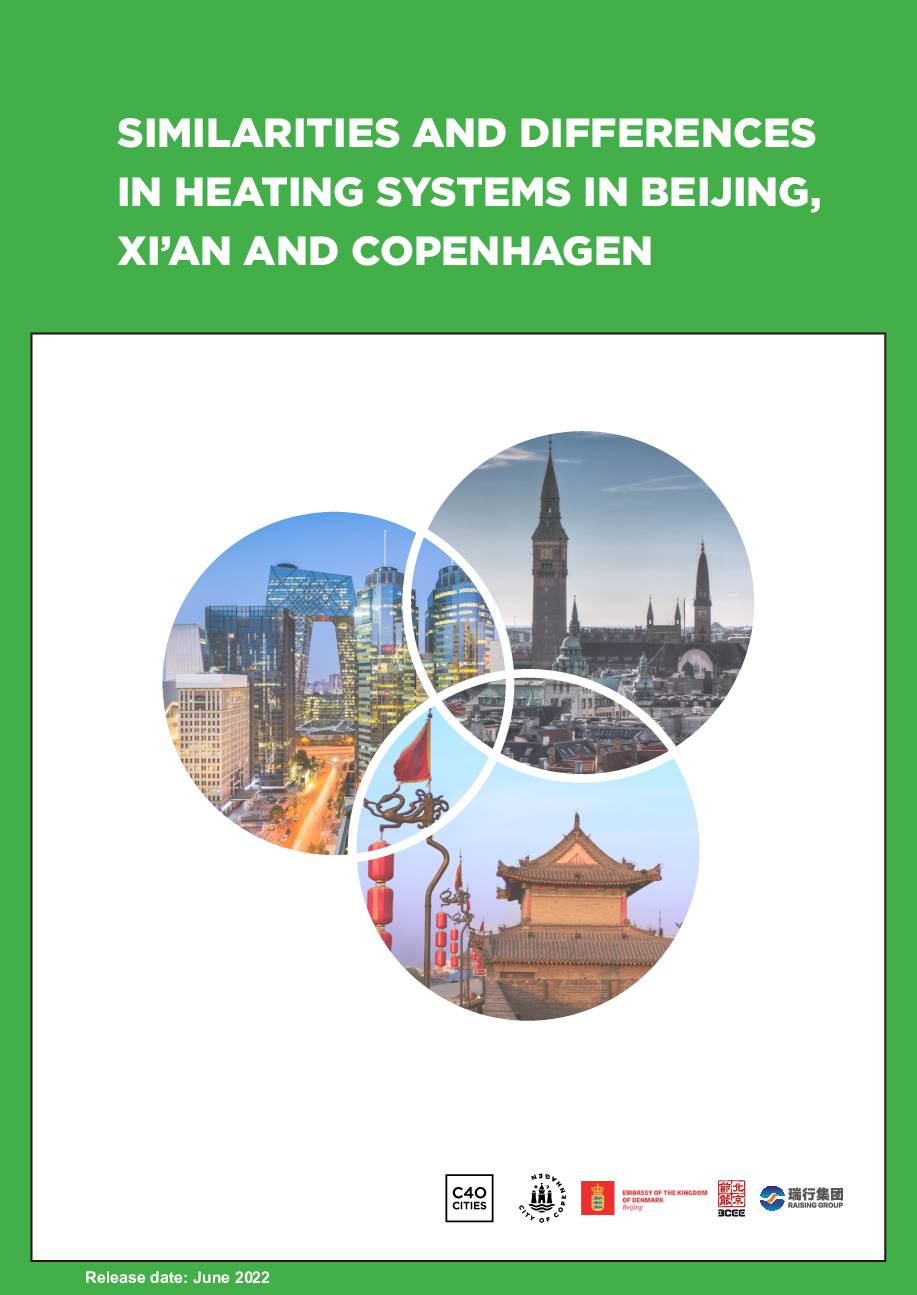Background
This comparison report has been produced as a result of a Strategic Sector Cooperation between Copenhagen and Beijing in partnership with C40’s China Buildings Programme (C40 CBP) from 2018 to 2022, and Xi’an joined the cooperation in 2020.
One of the chief inspirations for this cooperation came in 2017 when Copenhagen won a C40 Cities Bloomberg Philanthropies Award in the Cities4Energy category for the project “Energy Surveillance, Management and Efficient Operation in Public Buildings.” The energy surveillance system was developed by Copenhagen Properties and Procurement (Københavns Ejendomme & Indkøb) in collaboration with the city’s distribution company HOFOR. The system enables the municipality to monitor the consumption of electricity, water and heat on an hourly basis and continuously improve the buildings’ energy consumption. Can these systems be replicated in China? This has been the focus of the cooperation between Copenhagen Beijing, and Xi’an.
Scope of work
The report has revealed significant differences between Copenhagen, Beijing and Xi’an’s heating systems. However, despite these differences, the comparison research also uncovered the potential for substantial energy and carbon emission savings to be achieved through knowledge sharing and adapting approaches between these cities.
Following numerous technical exchanges, online video screenings, and discussions, three pilot projects were implemented in Beijing and Xi’an – real examples to test previous research findings. These pilot projects had three key focus areas and deliverables to:
- achieve hydraulic balance in the secondary pipe networks of the district heating system.
- utilize climate compensation technology at district heating substations.
- reduce heat supply to public institutions outside working hours.
The results were a clear and a self-evident success: energy savings of up to 25 % were realized with a demonstrable payback period on the investment necessary within 2 years and in some cases even in less than 1 year.
Key recommendations for China:
- The pilot has made a beneficial exploration, by attempting to change the traditional single supply-side technical adjustment method, and realized the transition from “heat source” adjustment and “heat exchange station” adjustment to “building adjustment” on the user side of the second network, and gradually approached Denmark’s household and room control.
- Due to limited timeframes and funding, the pilot studies were limited to the regulating technology and control of the hydraulic system of the secondary pipe network, from district heating substation to building entrance. It is recommended further pilot work should go deeper into controlling heat supply of individual building rooms, which can cover:
- Individual household control technical scheme, equipment and implementation points;
- Heat and electricity saved by individual household control technology;
- Room temperature and user feedback after adopting optimized control technology;
- Technical and economic analysis using regulating technology.
Share this

Sector: District energy
Country / Region: China, Denmark
Tags: balancing, corporate reporting, electricity generation, emissions, global climate, implementation, partnerships, projects, sustainable livelihoods approaches, water resourcesIn 2 user collections: Urban Climate Neutrality (China) , Sino-Danish Clean and Renewable Heating Cooperation Centre – Library
Knowledge Object: Publication / Report
Publishing year: 2022
Author: Theis Hybschmann Petersen, Anders Christian Lyngtorp, Mogens Krighaar, Nick Bjørn Andersen, Nils Daugaard, Zhou Ning, Huang Wei, Lai Ting, Luke Sherlock, Qiu Yuping, Hou Jing, Weihua Xiao, Christina Anderskov, Li Ran




